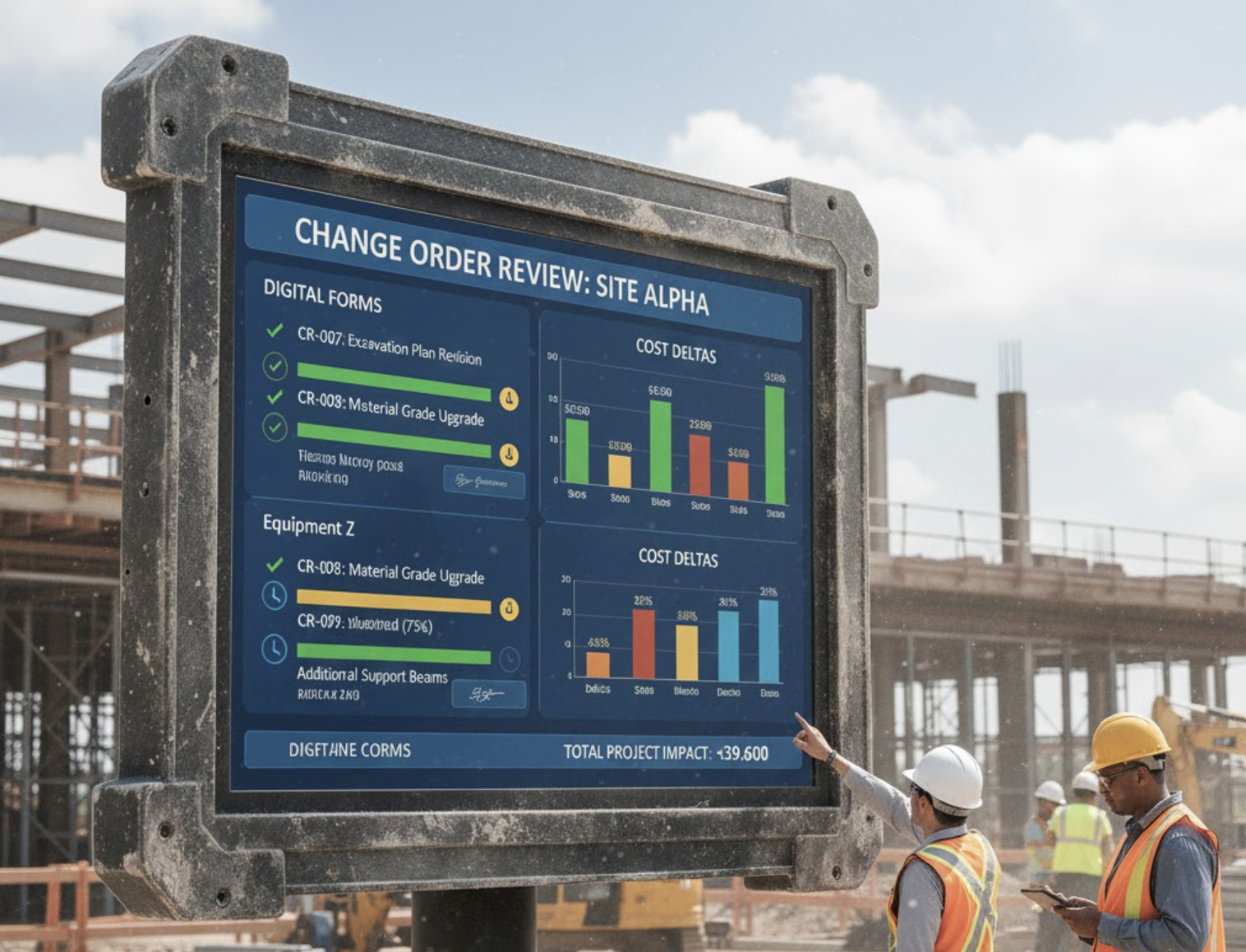How a Digital Audit Trail Helps with Authority Submissions
In the construction industry, navigating through the intricate processes of authority submissions—including permits, regulatory approvals, and compliance documentation—can be daunting. A digital audit trail serves as a systematic and chronological record, capturing all changes and interactions related to project documents throughout their lifecycle. This innovative approach ensures compliance, enhances accountability, and streamlines operations, making it easier for construction managers to meet regulations and improve project delivery.
Key Concepts and Benefits of Digital Audit Trails
Digital audit trails provide several critical advantages that significantly benefit construction projects. Below, we explore the top benefits that come from implementing a digital audit trail in the context of authority submissions.
Ensures Compliance and Regulatory Adherence
One of the primary benefits of using a digital audit trail is that it captures all project activities and document changes, creating verifiable proof for compliance with industry regulations such as FDA 21 CFR Part 11 and construction laws. With organized and up-to-date records, project teams can readily demonstrate that all regulatory requirements are met, thereby minimizing the risk of penalties or delays in submissions.
Enhances Accountability and Transparency
Digital audit trails offer a detailed history of actions performed by individual users. Every change made—who did what, when, and why—is time-stamped and attributable, making it easier to trace responsibilities. This level of transparency discourages unauthorized changes and strengthens trust between project teams and external authorities.
Improves Data Integrity and Accuracy
With automated tracking, a digital audit trail helps to ensure that all information presented to authorities is both accurate and complete. As manual data entry is minimized and transcription errors are reduced, there is a significantly lower chance of mistakes or lost information, which can be detrimental to compliance efforts.
Streamlines Audits and Inspections
When regulatory agencies or internal auditors request documentation, having a digital audit trail allows construction managers to quickly compile necessary records. This drastically reduces time and effort compared to traditional methods of sifting through paper files. The automated and searchable nature of digital records makes audits more efficient.
Error and Fraud Detection
By maintaining a clear log of all actions, digital audit trails help highlight anomalies, unauthorized access, or data tampering. This enhances security and supports quick investigations or resolutions if discrepancies arise. The presence of a transparent, unchangeable record serves as a deterrent against fraudulent activities.
Operational Efficiency
Integrating a digital audit trail into construction workflows automates tracking and reporting processes. This allows teams to focus on high-value work rather than administrative tasks, ultimately enabling real-time insights and minimizing human error for smoother project execution.
Prevents Data Breaches and Reduces Legal Liabilities
Continuous monitoring and logging of access can alert organizations to unauthorized attempts to access sensitive information, safeguarding against breaches. Providing a legally defensible position, a digital audit trail demonstrates due diligence in record-keeping during legal or compliance challenges.
Relevant Statistics & Innovations
Research shows that organizations employing digital audit trails experience considerably reduced submission errors and faster turnaround times for authority approvals. Innovations such as integrations with IoT devices and real-time sensors further enhance audit trail capabilities, making compliance and risk management more manageable. Industry reports indicate that automated audit trails can cut down audit preparation time by up to 50% while significantly minimizing the risk of non-compliance penalties.
Use Cases of Digital Audit Trails
Various sectors benefit from the application of digital audit trails:
- Construction Industry: Projects often involve managing permit submissions, change orders, RFIs, and compliance reports, ensuring all actions are recorded and traceable. Solutions like Zepth’s Document Management enhance this process significantly.
- Pharmaceuticals: Organizations rely on digital audit trails to demonstrate compliance with FDA regulations, guaranteeing production data integrity.
- Financial Services: Maintaining accuracy in transaction histories is paramount for audit and regulatory reviews.
- Clinical Trials: Secure and transparent records of delegations, approvals, and data changes are crucial for trial authorization.
Best Practices for Implementing Digital Audit Trails
To maximize the benefits of a digital audit trail, consider the following best practices:
- Automate wherever possible: Use platforms capable of automatically logging changes, user actions, and document versions for seamless management.
- Implement access controls: Restrict who can view, modify, or approve documents to ensure that all actions are attributed to individual users.
- Regularly review audit logs: Proactively monitor logs for anomalies, unauthorized changes, or access attempts to enhance security.
- Integrate with core project management tools: Ensure that your audit trails connect to essential workflows, fostering seamless traceability throughout all project phases.
Zepth’s Role in Enhancing Authority Submissions
Zepth offers powerful digital audit trail capabilities tailored precisely for construction project management. Key advantages include:
- Comprehensive Document Management: Every document, change, and approval is systematically logged and easily retrievable through Zepth’s Document Management.
- Automated Compliance Reporting: Quickly generate detailed and compliant reports for authorities, auditors, or internal reviews.
- Risk and Issue Tracking: Zepth detects and flags anomalies, reducing the risk of errors, fraud, or delays in submissions, which can be further explored at Zepth Risk Management.
- Streamlined Approvals Workflow: All authority-related submissions, including permits and RFIs, are traceable with role-based accountability and real-time status visibility.
For more insights on digital audit trails, check out our post on Digital Audit Trails for Authority Submissions.
Emerging Trends in Digital Audit Trails
Within the realm of construction, there’s a growing trend towards adopting AI-powered anomaly detection in audit logs. Furthermore, as projects evolve from pre-construction to post-completion, the integration of digital audit trails across all phases provides seamless regulatory reporting and enhances overall efficiency. The shift towards cloud-based, mobile-accessible audit trail solutions continues to gain traction, driving greater adoption and satisfaction among construction professionals globally.
In conclusion, implementing a robust digital audit trail not only ensures compliance and reduces risk in authority submissions but also drives greater efficiency, transparency, and trust in overall project delivery.




